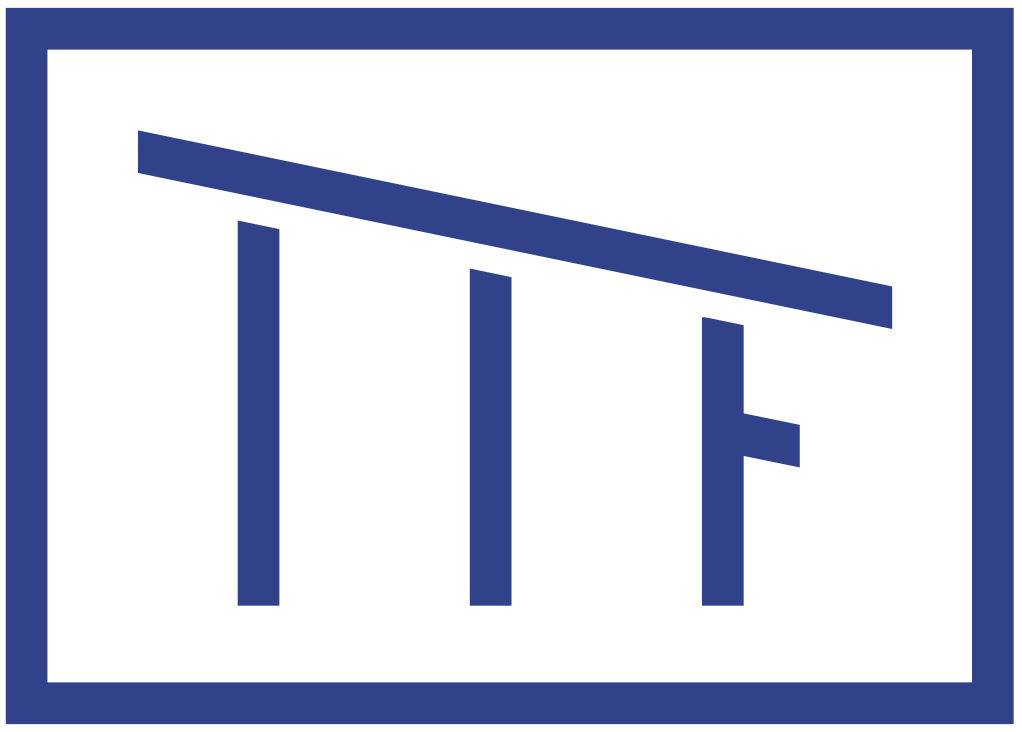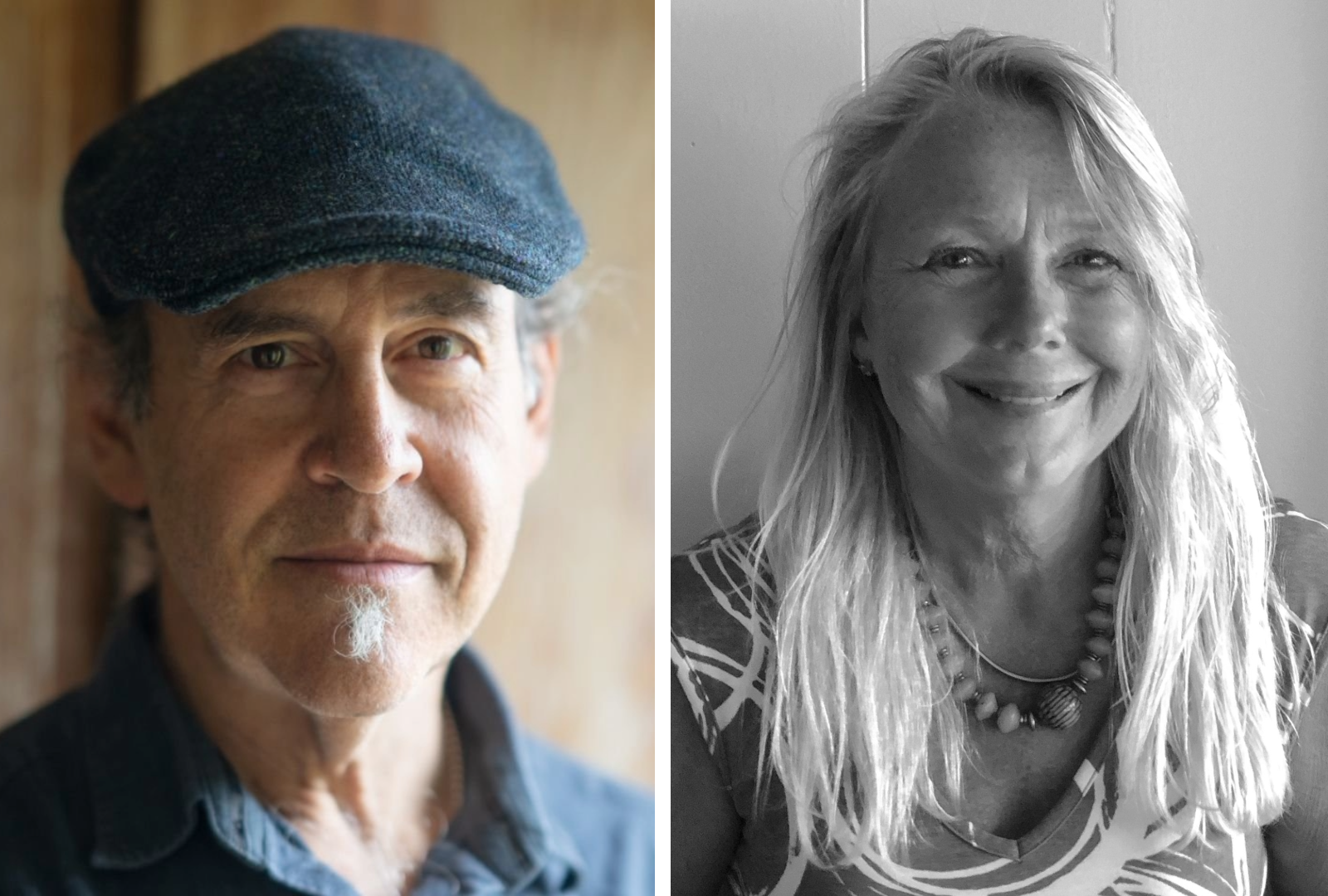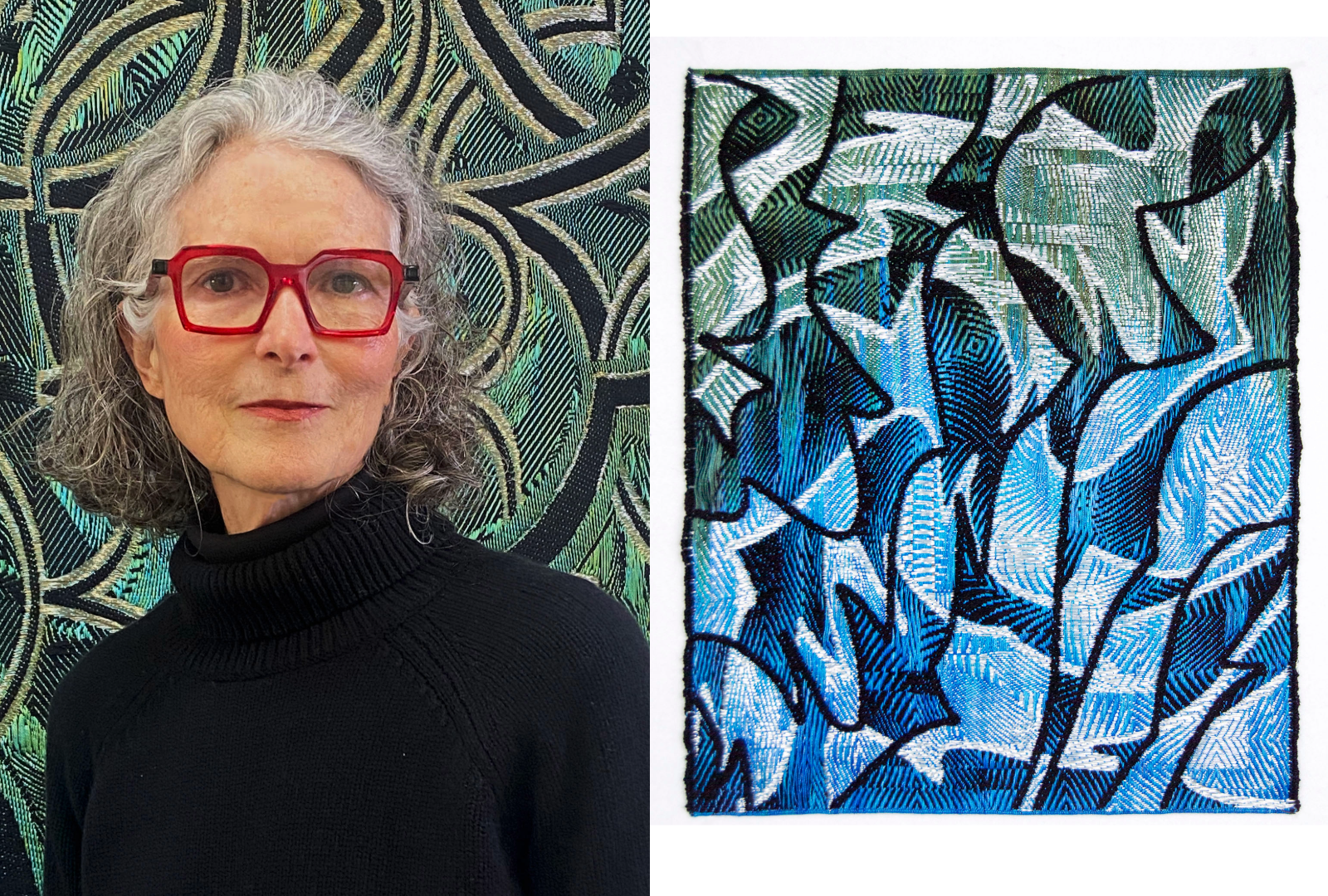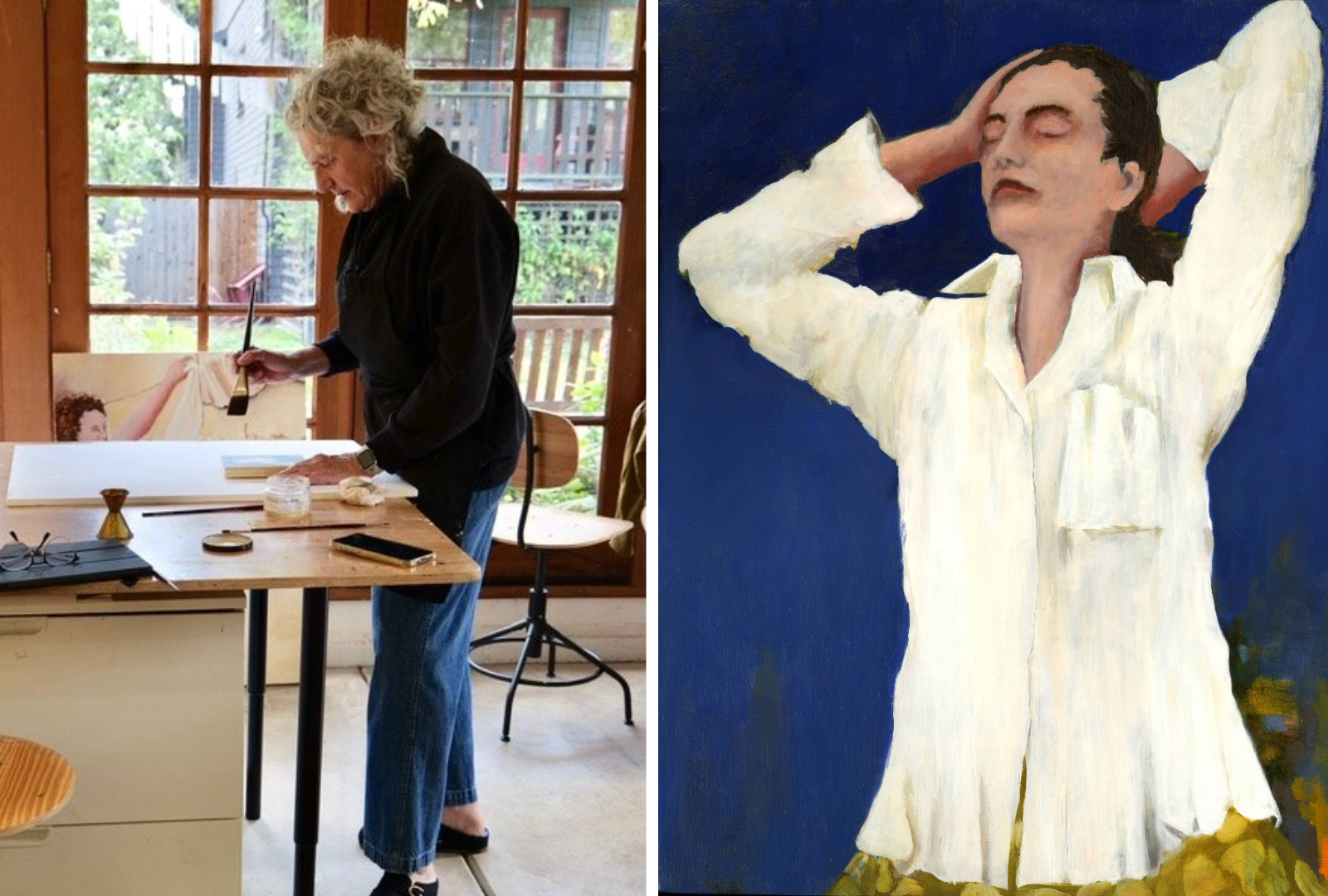Tusen Takk Announces 2026 Artists-in-Residence
The Tusen Takk Foundation is delighted to announce the seven artists who have been awarded residencies in the first half of 2026! Coming to Northern Michigan from across the country, they will explore new ideas at Tusen Takk in various media, including printmaking, weaving, and painting. The artists will work and live at Tusen Takk for between three and eight weeks, immersing themselves in the landscape of Northern Michigan. As much as a residency at Tusen Takk provides artists with a time to create, it’s also a time to step out of their daily lives to slow down, reflect, and regenerate. The 2026 artists-in-residents are:
Mary Zicafoose (Cedar Bluffs, NE)
Jon and Cathy Cone (East Topsham, VT)
Jennifer Wen Ma (New York, NY)
Janice Lessman-Moss (Kent, OH)
Patricia Altschul (Sacramento, CA)
Kate Kinder (Murfreesboro, TN)
About Tusen Takk
The Tusen Takk Foundation seeks to nourish artists by giving them a time and a place to work, an engagement opportunity to enrich the culture of Northwest Michigan, and a platform to share their work internationally.
“Tusen Takk” means “thousand thanks” in Norwegian and is often used to convey appreciation for something received, like a wonderful dinner or a helping hand. With this same sense of gratitude and grace, the founders established the Tusen Takk Foundation to express thankfulness to artists for the transcendent truth and intangible joy they give back to the world in their work.
Located on the isolated Leelanau Peninsula in Northwest Michigan, the Tusen Takk studios and guesthouse are set into the quiet, forested dunes of Lake Michigan. Designed by world-renowned architect Peter Bohlin, the buildings provide artists with an architecturally inspiring space to focus on their work.
The Tusen Takk Artist-in-Residence Program
Tusen Takk was designed to host one artist-in-residence at a time (or two artists in collaboration) to provide artists with space and time to develop current work and explore new directions. While in residence, artists are encouraged to engage with the local arts community. In the past, artists have invited guests for a workshop or studio visit or given a public talk, exhibition, or performance in collaboration with one of the Foundation’s partner organizations.
Mary Zicafoose is a tapestry weaver. Using massive room-sized looms and intricately dyed threads, she uses age-old textile processes to tell contemporary stories in woven cloth. The landscape of the Great Plains has been the template for her work over the last three years, specifically inspired by Pahuk, her family property on the Platte River in rural eastern Nebraska.
At Tusen Takk, Mary plans to step away from her looms and dyepots and is looking forward to giving form to her storytelling in fiber with a different hand, in a different way. She will experiment in draping, sewing, pleating and piecing scraps and lengths of ethnic and salvaged textile remnants together, embellishing the assemblages with hand and machine stitching, dyes, markings, and paint.
Michigan-born, Mary Zicafoose received her BFA from St. Mary’s College with graduate studies at the School of the Art Institute of Chicago and the University of Nebraska. As a young artist, seeking to make work in cloth more painterly, she explored the complex and relatively obscure resist dye technique of Ikat. Three decades later, she remains joined-at-the-hip with this textile process. Her work is exhibited and collected internationally, included in the collections of sixteen United States Embassies on four continents. Her most recent contribution to the textile field is the Penguin/Random House book, Ikat: The Essential Handbook to Weaving Resist-Dyed Cloth, released in fall 2020.
Right: After the Storm, 60” w x 72” l, weft face ikat tapestry, ikat wrapped, dyed, & handwoven wool on linen warp, 2025.
Currently living and working in Vermont, Jon Cone is a Master Printer, photographer, developer of technology, and educator. He and his wife Cathy Cone, founded Cone Editions Press in 1980. For Jon, being able to manifest technology has always benefited his printmaking, yet he tends to develop techniques based on inspiration drawn from those he’s printed for or collaborated with.
Cathy Cone is a photographer and painter whose surrealist approach to photography began in the 1970s with the introduction of the "Diana" camera. This led to investigations of experimental techniques towards a multidisciplinary approach to her poetic image-making. Cathy says, “I make photographs as a way to listen to my heart's song, and then I practice like hell to sing it.”
Returning to Tusen Takk in 2026, Jon and Cathy Cone’s special residency will serve the Foundation and resident artists for years to come. In collaboration with Foundation staff, the Cones will produce a group of exceptional photographic-based works that utilize a range of different processes, and we will create written and video step-by-step documentation of each process used.
The purpose of this documentation is to give Tusen Takk’s visual artists a means to use these processes in the best ways possible. Our studio setup and equipment are notably different (better) than what most people are familiar with. Easy-to-understand documentation will allow artists to use this equipment to its fullest capabilities. At this time, the processes we are aiming to document include: Piezography, photogravure, platinum printing, and digital negatives/positives.
Jennifer Wen Ma’s interdisciplinary practice bridges varied media such as installation, drawing, video, public art, oral history, design, performance, and theatre; often bringing together unlikely elements in a single piece, creating sensitive, poetic, and poignant works.
At Tusen Takk, Jennifer plans to create ink paintings on acrylic panels for a 128-foot continuous artwork commissioned by the NYC Department of Cultural Affairs. The piece will wrap around a five-story glass stair tower, with areas of varying opacity and translucency. The style will be gestural and abstract, rooted in ink painting traditions, with detailed figurative elements inspired by oral histories from the building’s tenants—community-focused cultural and social service organizations.
Ma moved from Beijing to the United States in 1986 and received her MFA from Pratt Institute. Ma’s recent projects have been installed at the National Art Center Tokyo, Expo Chicago, Fosun Foundation, Shanghai, and the New Britain Museum of American Art. Recent public art installations include commissions from the New York City Department of Cultural Affairs, MGM Cotai, Macau, and The National Aquatic Center, Beijing. In 2015, she conceived, visually designed, and directed the opera Paradise Interrupted, performed around the world. Ma teaches in the MFA program at the School of Visual Arts.
Left: Portait courtesy of Loghaven by Shawn Poynter
Right: Eight Views of Paradise Interrupted, (detail), 2017
Ink, paint, acrylic panels, hand-cut Japanese paper garden. Sandra Gering Inc., New York, NY.
Janice Lessman-Moss is a weaver intrigued by the binary vocabulary of the process. That duality provides the visual and conceptual/poetic foundation for her work. With the warps installed on the loom, the wefts are introduced in an accumulation of line that evolves into an ordered field of tactile patterns, orchestrated through the systematic movement of the hands and body.
At Tusen Takk, Janice imagines that the dramatic landscape will stimulate new visual ideas; alternative ways of considering space, color, etc. Both weaving and walking form the core of her engagement with the world and her voice in it. Like weaving, walking progresses in a linear path of steps, marking time through accumulation, and while the activity revolves around physical movement, it also occupies the mind and senses. She anticipates that the rhythms of the water, the quality of light, the feel of the air will permeate the mind and body in a distinct way and, surrounded by a new environment, her weavings will honor this experience.
Janice Lessman-Moss maintains a weaving studio in her home in Kent, Ohio where she is Emeritus Professor at Kent State University. She was awarded a United States Artists Fellowship in 2019, the Cleveland Arts Prize Lifetime Achievement Award, the Governor’s Award for the Arts in Ohio, an Arts Midwest/National Endowment for the Arts Fellowship in Crafts, and nine Individual Artist Fellowships from the Ohio Arts Council throughout her career. Her work been presented throughout the United States and internationally, including a recent solo exhibition at the Kent State University Museum.
Right: #505B, Swirling Light II, 3/24, 17.25x14.25”
Linen, wool, aluminum wire, digital jaquard, hand woven TC2 loom
Patricia Altschul’s images begin with drawings and studies created from the synthesis of collected memories and photographs. The photographs act as a map, illuminating questions of gesture, perspective, and structure drawn from the narrative of memory. Studies are followed by larger paintings, though sometimes the studies themselves become the final image.
At Tusen Takk, Patricia intends to use the quiet of the solitary residency to explore working in and with water-based media, primarily gouache, teaching herself the techniques required to work in the same image language as oil-based paint. She hopes to create a series of works echoing the luminous surface quality of the Italian frescoes of the early Renaissance.
Patricia was born in Hempstead, NY and raised in Palo Alto, CA. She earned both her BA and MFA at UCDavis. She subsequently worked in Togo, West Africa for USAID, taught art locally, and was an adjunct faculty member at American River College, where she taught painting, drawing, and design. Her work has been shown locally and nationally and is in numerous private and corporate collections. She is currently represented by the b.Sakata Garo Gallery. Patricia works in a garden studio in Sacramento, CA where she is distracted by stray birds, her dog Fiep, and the changing seasons.
Right: White Shirt, Blue Day
Kate Kinder makes paintings in reaction to our visually saturated world. Interested in how our perception of reality fluctuates between internal and external—consciousness and decoration—her work is in conversation with a revolving door of inquiry surrounding value hierarchies, object philosophies, and vision.
At Tusen Takk, Kate will begin by making observational drawings of the surroundings, a process that is a normal occurrence in her work. She will use the culmination of the drawings and translate the emotive, nonverbal experiences onto canvas by mimicking the drawings. Using a method of collecting color combinations, she plans to harvest the colors of the surroundings and transcribe them into the works using acrylic, latex, oil paint, and a variety of drawing materials. As an intuitive, experimental artist working primarily in drawing and painting, she anticipates that the new body of works will evolve as she becomes more familiar with the place, its inhabitants, nature, and light.
Kate Kinder currently lives and paints in Murfreesboro, Tennessee. Growing up in south-central Kentucky rewarded Kinder with an ever-lasting appreciation for slow-made objects and glittering southern light, and nurtured her love of art. Kinder has lived and taught in Florida, Central Michigan, and Stillwater, Oklahoma, and has exhibited work internationally. She holds a MFA from the University of South Florida and a BFA and a BA from Western Kentucky University. She is an Assistant Professor at Middle Tennessee State University.
Right: Sometimes, Even Now, 2022. 20" x 16” x 1.75" Acrylic, latex, micron, gel pen, graphite on artist-made panel







